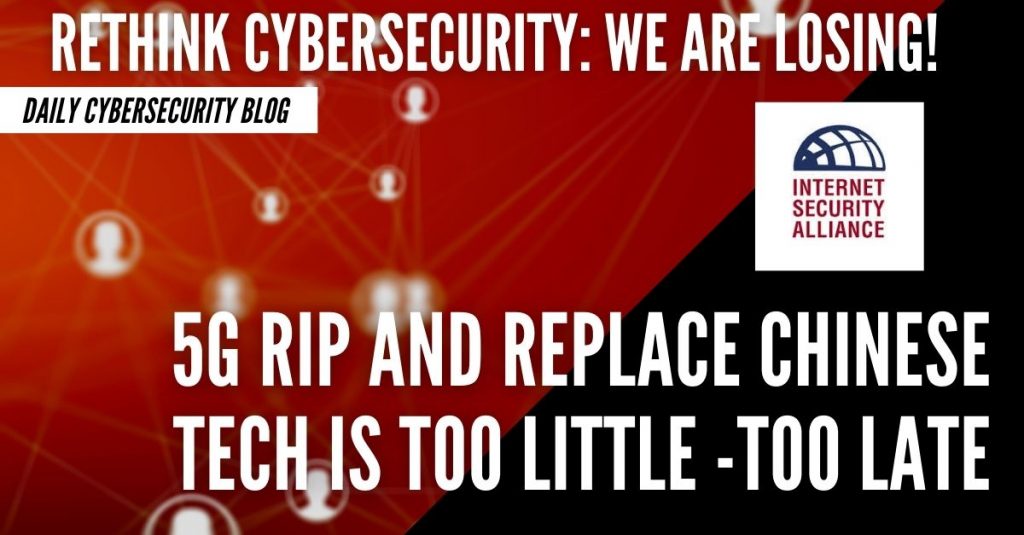This post is a one in the “Rethink Cybersecurity” series. Additional posts in this series are available here
It might be understandable that countries with underperforming economies and anxious to provide their citizens with the economic development that can be stimulated by digital technology would be attracted to low priced, high value Chinese technology. But the Digital Silk Road, complete with its massive cross-subsidization has reached highly developed c-economies countries in Europe and even pockets in rural America.
After considerable jaw-boning the Trump Administration eventually agreed to fund rural telcos who had bought and installed Huawei technology to rip and replace the Huawei systems. While ripping and replacing Chinese technology due to its national security risks may be practical for a smattering of small rural telcos, the sad truth may be that concern about securing internet networks from Chinese access may already be a closed issue.
In mid-summer of 2020 US Secretary of State Mike Pompeo announced a series of agreements with eastern European countries who have ostensibly agreed to US proposals for “ripping-and-replacing” Huawei technology from their networks in a similar fashion as several rural US based telco have agreed to.
While the recognition of the potentially significant impact of Chinese control of western telecommunications in the digital era is welcome, “ripping and replacing” is just a short-term solution to a limited number of the digital threats China poses, it can scarcely be considered a cost-effective solution.
For example, the extent of China’s influence in Asia may well be underestimated in the west, but even close US allies in the region attest to the degree of China’s current influence. Kunihiko Miyake, a former diplomat who served Japan in both Beijing and Washington and now heads the Tokyo based Foreign Policy Institute attempted to put China’s status in terms Americans can understand “Chinese influence in Asia is actually much larger than Soviet influence was in Eastern Europe.”
Although the US has banned Huawei products from its networks and pressured other allies to restrict use of Huawei equipment they have integrated into their systems, that may already be impractical if not impossible – due to the economics.
The United Kingdom is arguably the US’ most reliable ally. Vodafone is based in the UK but is actually the world’s second largest telecommunications system (after China Telecom) Vodafone has used Huawei products in its many networks for years.
In an April 2020 essay for Lawfare Vodafone Executive Joachim Reiter argued that the US position – that Huawei products need to be eliminated from western networks which are part of the international security supply chain — for security purposes — is simply impractical for economic reasons.
“European carriers and governments are working hard to figure out how to best reconcile market conditions and the EUs ambitions for implementing 5-G with Washington’s perspective on supply chain security. The decision to continue to utilize Huawei is born of practicality, given Europe’s past use of Huawei and the lack of options when it comes to vendors and the prevailing market environment…. Unlike the US, European carriers long ago installed Huawei products throughout 3G and 4G networks… Removing them from 5G means removing it from 4G, etc.” In July 2020 at least one European nation, the UK – no longer a member of the European Union – agreed to a compromise position agreeing to stop purchasing Huawei equipment by the end of the year, and clear Huawei equipment from its network in 7 years (traditionally the typical length of time telephone companies swap out their technologies). As of this writing the other major European countries have not followed the UK lead. and to do so in the post-pandemic environment may be extremely difficult.
Join the Rethink Cybersecurity Community click here


